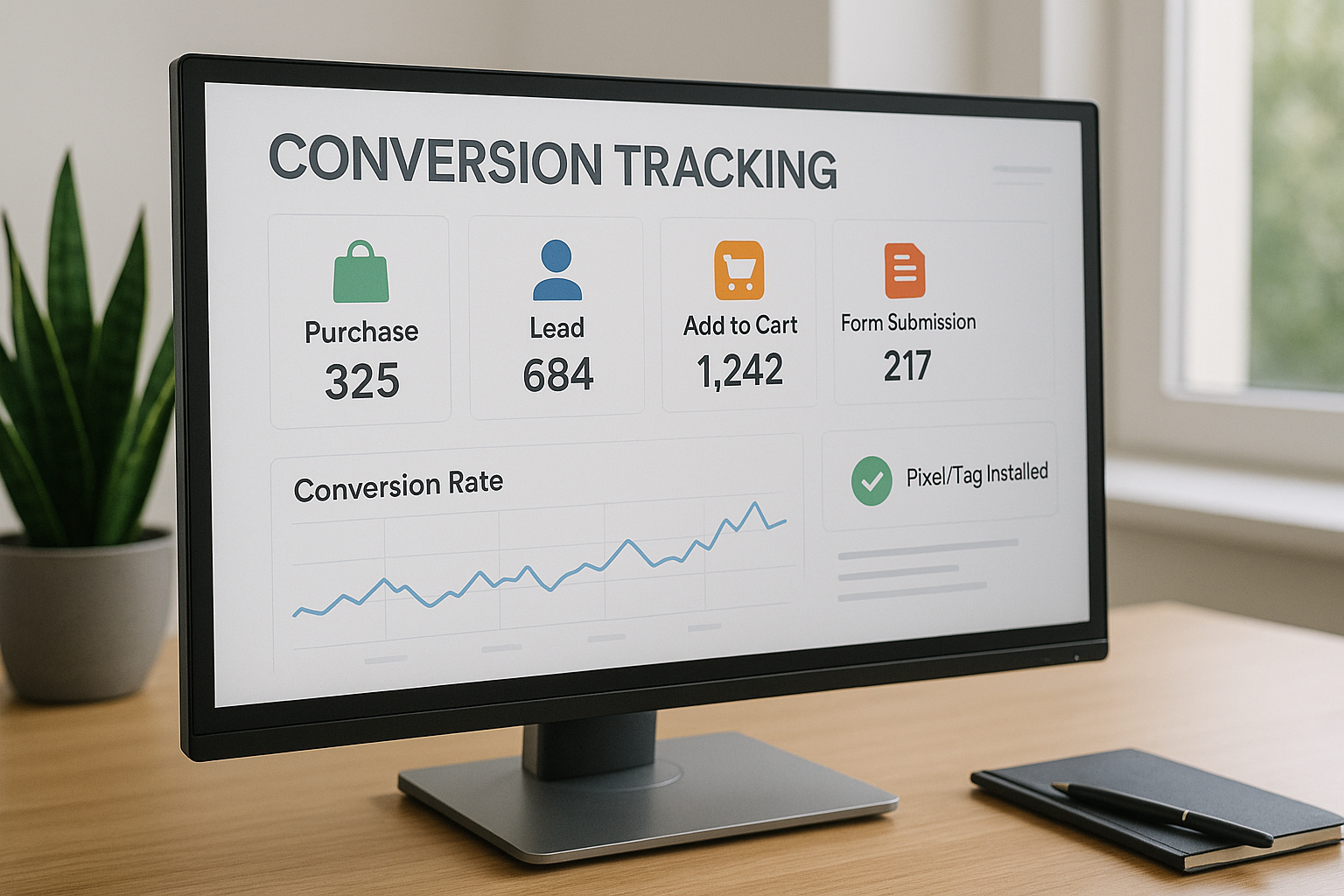In paid traffic, the goal isn’t just to get clicks—it’s to generate conversions. Whether you want sales, leads, sign-ups, or app installs, you need to track conversion events to know if your ads are working. Without this, you’re spending blindly. In this article, we’ll explain what conversion events are, why they matter, and how to track them properly across different ad platforms.
What Is a Conversion Event?
A conversion event is a specific action that a user takes on your website or app that’s valuable to your business. This could be:
- Making a purchase
- Filling out a form
- Signing up for a newsletter
- Booking a call
- Downloading an app
Each of these actions is considered a “conversion” when it aligns with the goal of your campaign.
Why Tracking Conversion Events Is Essential
Tracking conversions allows you to:
- Measure the effectiveness of your ads
- Optimize campaigns based on actual results
- Understand your true cost per action (CPA)
- Build retargeting audiences
- Improve return on ad spend (ROAS)
Without conversion tracking, all you’re seeing is surface-level metrics like impressions and clicks, which don’t tell the whole story.
Types of Conversion Events
Standard Events: Predefined by the ad platform
Examples: Purchase, Lead, Add to Cart, Initiate Checkout
Custom Events: Created to match specific goals
Example: Click on a particular button, time spent on a page, watching a video
Micro-Conversions: Smaller actions that lead toward a sale
Example: Viewing a product, starting a quiz, clicking a CTA
Macro-Conversions: Final business goals
Example: Completing a purchase or submitting a lead form
How to Track Conversion Events
1. Meta (Facebook & Instagram)
Use the Meta Pixel:
- Install it on your website
- Configure Standard Events via code or Events Manager
- Use the Conversions API for advanced server-side tracking
2. Google Ads
Use the Global Site Tag (gtag.js) or Google Tag Manager:
- Define conversions in your Google Ads dashboard
- Use the “thank you” page URL or event-based triggers
3. TikTok Ads
Use the TikTok Pixel:
- Install via code or Tag Manager
- Create custom events based on URL, button click, or engagement
4. LinkedIn Ads
Use the Insight Tag:
- Define conversions using URL-based or event-based tracking
5. Third-Party Tools
You can also use:
- Google Analytics 4 for cross-platform tracking
- Hotjar or Clarity for behavior analysis
- CRM tools (like HubSpot or ActiveCampaign) to sync leads and track source
Best Practices for Conversion Tracking
- Verify installation: Use pixel helper or tag assistant tools
- Avoid duplicate tracking: Only fire events once per action
- Test before going live: Ensure everything triggers properly
- Use naming conventions: Keep events clear and organized
- Track both micro and macro events: Get a full-funnel view
Common Mistakes to Avoid
- Not installing the pixel or tag correctly
- Only tracking clicks, not real outcomes
- Not segmenting events by campaign
- Tracking too many irrelevant actions
- Forgetting to test on mobile devices
How Conversion Events Impact Optimization
Most platforms use machine learning to optimize campaigns based on conversions. The better your data, the better the algorithm performs. Platforms like Meta and Google learn who’s most likely to convert and deliver your ads to those people. More accurate conversion tracking = better performance.
Final Thoughts: Track What Matters
Paid traffic without conversion tracking is like driving blindfolded. To run profitable campaigns, you must know what’s working—and what’s not. Set up your conversion events, test thoroughly, and let the data guide your decisions. When you track the right actions, you make better choices, optimize faster, and scale smarter.

